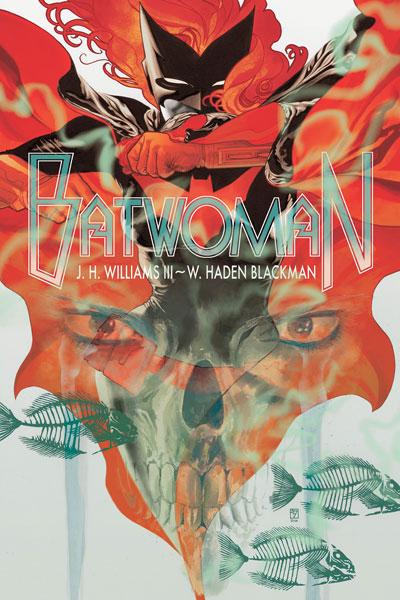At long last, Batwoman – “lesbian socialite by night and crime-fighter by later in the night” – will sleuth, spar and slut her way through the self-titled series that DC Comics promised back in April 2010.
The series – which tantalized fans with a critically acclaimed teaser issue, Batwoman #0, in November 2010 – was initially scheduled to launch in February 2011 but was delayed until April 2011, at which point Batwoman-as-leading-lady was postponed indefinitely.
The announcement – which was delivered sans reasoning – left fans and critics alike wondering if perhaps DC was experiencing cold feet, some homo anxiety at the thought of headlining this ass-kicking lesbian leviathan.
There is, however, both rhyme and reason behind the continued deferrals of Batwoman #1 – which, as DC Comics announced July 6, will hit stands on Sept 14.
As it turns out, Batwoman will launch amid an epic redesign of the entire DC Universe.
Beginning Aug 31 and continuing throughout September, DC will relaunch 52 #1 issues from its 76-year repertoire of superhero stock – including Superman, Wonder Woman, Batman, Catwoman and Green Lantern – each series boasting wild revisions to costumes, character origins and storylines, in an attempt to modernize and diversify the DC Universe.
Batwoman #1 will see the infamous red-headed heroine – aka Kate Kane – “estranged from her father, embarking on a new romance and trying to figure out if she’s mentor material,” says Batwoman writer W Haden Blackman (insidepulse.com). “But by the end of the first arc, all of these relationships will have changed in some meaningful way.”
It was in the 2006 series, 52, that Batwoman was gloriously reincarnated as a Jewish lesbian superpower (funny, given that the sole purpose of her 1956 introduction was to combat the hurricane of homo rumours swirling around Batman and Robin). Here, it’s revealed that Batwoman and hotshot ex-cop Renee Montoya (who later becomes the Question) were once a boot-knocking item.
Post-52, Batwoman proved elusive (save for a few cameos) until 2009, when she was hauled off the shelf and given top billing – albeit of limited run – in the series Detective Comics, following the (brief) “death” of Batman/Bruce Wayne. Think late-night vigilantism, killer battles with a villainous “Big Bad” and girl trouble. “[W]e have been waiting to unlock her,” writer Greg Rucka told comicbookresources.com at the time. “It’s long overdue.” That, and, “If people are going to have problems with [her sexuality], that’s their issue. That’s certainly not mine.”
In fact, DC Comics will be “unlocking” a slew of queer in the upcoming DC Universe relaunch.
Apollo and Midnighter – the superhuman fag couple from DC’s Wildstorm Universe (and imprint) – will actually be given starring roles in the DC Universe, via the reissue of Stormwatch #1. Their relationship, however, will be reinvented. As DC Comics co-publisher Dan DiDio explains in his July 18 interview with The Advocate: “Because they had an established relationship in the stories that were being told within the Wildstorm Universe – and this is the first time they’re being seen in the DC Universe – we wanted to build them from scratch and watch an emerging relationship between these two characters. So in this particular case, Apollo is much more out and much more comfortable with himself, [while] Midnighter is naturally a little more repressed. You’re going to see the two characters working side by side and showing the difficulties of working together, learning and growing as a team and then ultimately as a couple.”
And Voodoo – aka Priscilla Kitaen – the superhuman sometimes-stripper woman of colour who stole the WildCATs series (again, from DC’s Wildstorm Universe/imprint), has been recreated as bisexual in the DC Universe redesign, where she’ll headline her own series, Voodoo #1.
As DiDio tells The Advocate: “What we really wanted to do was show the diversity of our audience across the line of our books. Right now we have such a wide fan base, and we wanted to create characters and stories that really reflected [that] fan base.
“I think there’s a lot of empowerment that takes place in these stories, not just for gay readers, but for everyone. There’s [that] freeing aspect of when they put the costume on that allows them to transcend their normal life. If their normal life becomes oppressive, this is their escape from that, and I think that relates to anybody. More importantly, I think everyone wants to embrace that and run along with it.”

 Why you can trust Xtra
Why you can trust Xtra


